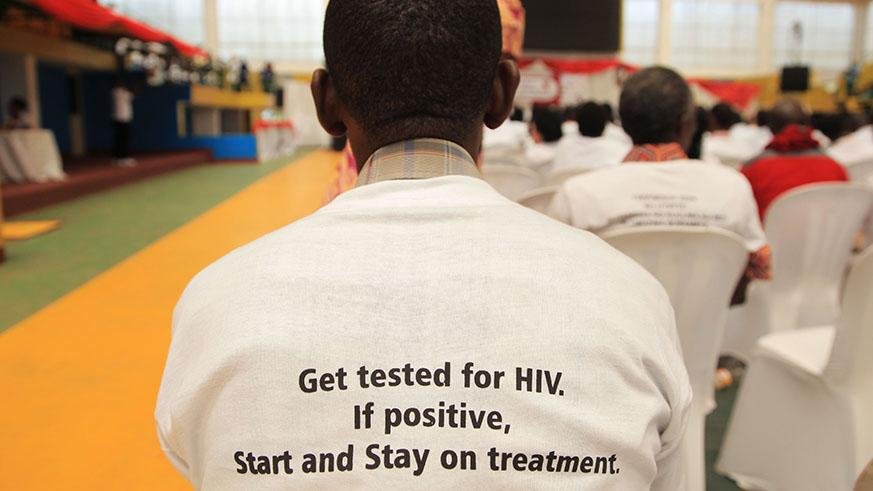Rwanda’s Remarkable Progress in Combating HIV/AIDS
Rwanda has made significant strides in the fight against HIV/AIDS, achieving remarkable reductions in new infections and AIDS-related deaths. The country has successfully met the UNAIDS 95-95-95 targets ahead of the 2030 global deadline. These targets aim for 95% of people living with HIV to know their status, 95% of those diagnosed to be on antiretroviral treatment (ART), and 95% of those on treatment to achieve viral suppression. Rwanda has not only met these goals but has also exceeded them in several areas.
The progress is attributed to a combination of strong government support, accessible health services, and active community involvement. Dr. Gallican Rwibasira, Division Manager for HIV, STIs, Viral Hepatitis and Other Viral Diseases at the Rwanda Biomedical Centre (RBC), emphasized that the government has focused on bringing HIV services closer to the people. This approach has made testing and treatment more accessible and integrated HIV care into general health services.
Key Strategies Behind Success
The success of Rwanda’s HIV program can be traced back to several key strategies. Political commitment, community engagement, data-driven decision-making, and collaboration among healthcare providers have all played crucial roles. These efforts have enabled the country to reduce infections and improve retention rates among patients.
Currently, over 94% of people living with HIV in Rwanda are on ART, and 95% of those on treatment have achieved suppressed viral loads. Testing services are widely available through health centers and community outreach programs. Index testing, which involves testing partners and family members of individuals diagnosed with HIV, has proven effective in identifying undiagnosed cases. However, its effectiveness has declined, necessitating new strategies to find those still unaware of their status.
Challenges and Ongoing Efforts
Despite the progress, challenges remain. Retention rates, which measure how long patients stay on treatment, vary between genders. Female patients have a higher retention rate at 96%, compared to 93% among males. The lowest retention rates are observed among males aged 15 to 24, highlighting ongoing challenges in engaging young men in long-term treatment.
Dr. Rwibasira noted that young people, especially teenage boys and young men, are often left behind. Addressing this issue requires understanding the unique challenges they face and offering services tailored to their needs and lifestyles.
Expanding Access to HIV Care
Rwanda began expanding HIV services in 2004, ensuring that care was available at every level of the health system. Today, health centers across the country provide testing and treatment, supported by peer educators and community health workers who help more people start and stay on treatment while addressing stigma.
HIV care is now integrated with treatment for other chronic conditions, reflecting the evolving needs of people living with HIV. By 2025, about 30% of people with HIV will be 50 or older, many dealing with conditions like high blood pressure and diabetes. This shift underscores the importance of a more comprehensive and integrated approach to healthcare.
Addressing Social Barriers
Stigma, discrimination, and gender inequality continue to hinder access to prevention, testing, and treatment, particularly for adolescent girls and young women. These groups are more vulnerable, especially when affected by gender-based violence. Efforts to expand HIV prevention now include pre-exposure prophylaxis (PrEP).
Oral PrEP has been available in Rwanda for several years, with around 30% of high-risk individuals currently using it. Nationwide, more than 10,000 people are on oral PrEP. In January, Rwanda introduced injectable PrEP, which is gaining acceptance among key populations, including sex workers and men who have sex with men. However, limited awareness remains a challenge.
Innovations in Healthcare Delivery
To make care more accessible, Rwanda has implemented approaches such as multi-month ART refills, community drug distribution, and mobile clinics. These innovations help reduce the challenges patients face in accessing treatment. The HIV program is guided by national frameworks, including the Sustainable Development Goals, the Health Sector Strategic Plan, and the National HIV Strategic Plan 2024–2027.
Strong partnerships with civil society, donors, and international organizations support the implementation of these strategies. Local leadership plays a vital role in driving progress. The country aims to sustain high rates of viral suppression, reduce new infections among vulnerable groups, adapt services for older adults living with HIV, and tackle social barriers impacting access and outcomes.
A Path Forward
Dr. Rwibasira emphasized that ending AIDS is within reach, but it will require sustained investment, innovation, and a commitment to equity. The collective effort of healthcare workers, policymakers, and communities has brought Rwanda to this point. Continued focus on these elements will be essential to maintaining and building upon the progress made.

